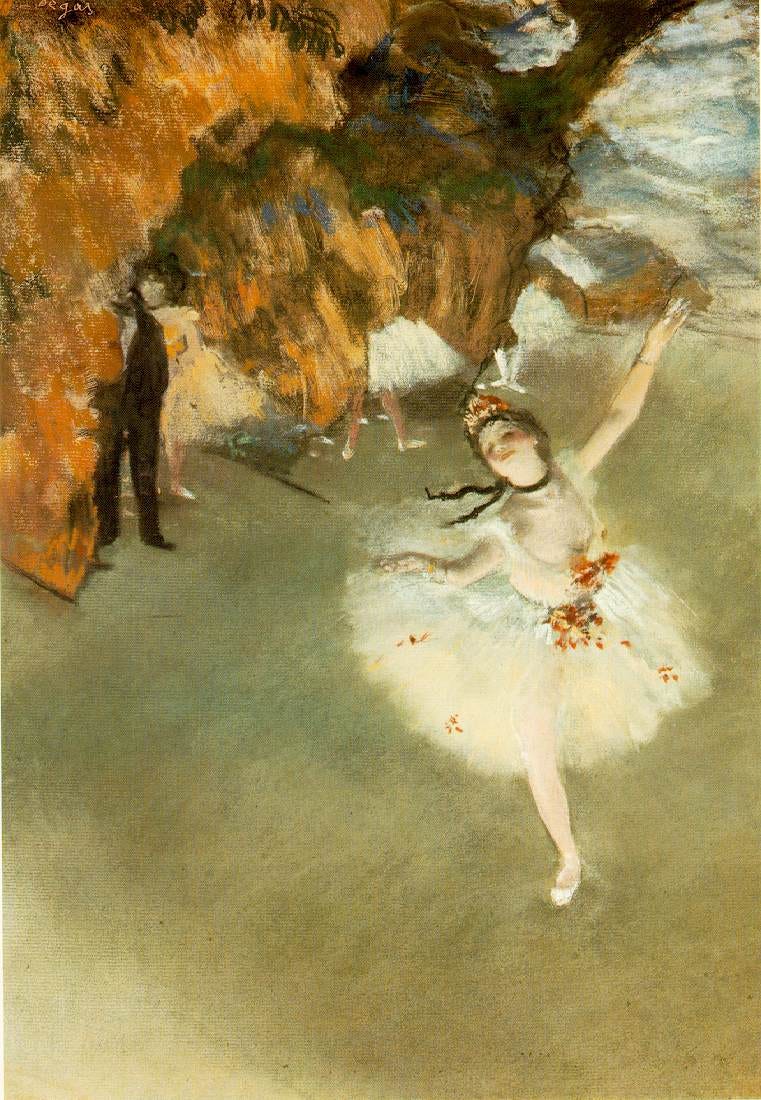The Gathering Site and the Inland Empire
If in the future we’ll be dreaming in a kind of sleep, @ the Outsideness of alterity, then the least you can do is look at us and tell us if you’ve known us before.
Look at us and tell us, “if today was tomorrow you’d have an unpaid bill.” Look at us and tell us if Jean-Marc Connerotte was the first to know “something is happening” in Belgium. Look at us and tell us “who hypnotized you?”
Rotten Tomatoes describes INLAND EMPIRE,
Nikki (Laura Dern), an actress, takes on a role in a new film, and because her husband (Peter J. Lucas) is very jealous, her co-star Devon (Justin Theroux) gets a warning not to make any romantic overtures – especially since the characters they play are having an affair. Both actors learn that the project is a remake of an unfinished film in which the stars were murdered.
Inland incursions recurred even in the red gels of astronomical dawn’s earliness. At some point, Sea Peoples surprised seedy Bronze Age Perverts. Present perversions Terminate this moment gloaming in Good Old Neon. Bare with me, but tomorrow’s azured retorsions will only rite the urceolate Carolla, The Man Show, once the other side is unconcealed as a glowing offer and echo wave sent from a gathering site.
As an Overture from A SPACE ODYSSEY is called Atmospheres, by Sculpting in Arseny Tarkovsky Time, David Lynch’s Polish Poem offers its airy consolation,
I sing this poem to you
On the other side I see
Shining waves glowing
It’s far away far away from me
I can see it there, I can see it there
INLAND EMPIRE’s plot contains all the unceasing fear and concomitant cruelty of Tiberius’ little fishies Cod in the time trap. Its soundtrack is a Black Tambourine of dissociative discord shaken to a repressed traumatune. Axxon N is why the women from MULHOLLAND DRIVE have to sleep with eyes open as RABBITS, asking, “What time is it?” of men who consider themselves good with animals, who have their way with them.
Sitting right when and where The Visitor predicts, Nikki is cast ON HIGH IN BLUE TOMORROWS, and soon subject to adulterous rumours. Infidelity is a sort of Bob’s-your-uncle to The Phantom. A GHOST STORY is about the other’s absence when “the twilight dusk blues ‘ghostly’” [1] as L’étoile (ou Danseuse sur scène).
Infected with Lynch’s “digital virus,” not long before he caught the elaborate hoax designed to conceal, watching eternal as Marilyn Levens watches the wolf in the Fenn house, author of Behind the Phantom’s Mask Roger Ebert writes,
There you have it. Something inside the story goes awry, the watch spring snaps and the works go flying in all directions, from the intersection of Hollywood and Vine to Poland to Pomona. Gypsies and gangsters and whores and animals appear. Blood and circuses! “Inland Empire” works – and works spectacularly – as a kind of fractal telenovela. Take any moment – any shot or sequence or motif – and you’ll find it repeated throughout the film at greater and lesser degrees of magnification. Like a fractal image, any single fragment contains within it a representation of the whole picture.
Crescending and rescinding “like when blue water sounds in stone,”[2] Nikki Grace must test for each sample point c to fractally find Grace Zabriskie’s pressured speech parable fortelos of emancipation,
A little boy went out to play. When he opened the door he saw the world.
As he passed through the doorway he caused a reflection.
Evil was born. Evil was born and followed the boy. And now the variation: A little girl went out to play, as if half born; lost in the marketplace. Then — not through the marketplace, you see that, don’t you — but through the alley behind. This is the way to the palace. But it isn’t something you remember.
Unfortunately the tight zoom held on The Visitor’s face evokes the herd’s laughter. Imagine looking as I look across the proscenium at this very Cinesphere audience of eternal MARIENBAD mannequins. Hearing your “OMG random”-noise equivalents eager to establish you ‘get’ that something is happening. Except that something is happening here but you don’t know what it is. You Simple Modern Tumblr slurpers do not deserve THE VISITOR’s message. And so this is the second time we’re trying this. It’s a story that happened yesterday but I know it's tomorrow. In the deleted evening, the donkey laugh man insisted upon himself well-neigh into the third act. We did this kind of trick on you, so that it seems YOU WERE NEVER REALLY HERE. Be forewarned: even one Reddit-tier response will piscine the pooling layer, causing an entire night of your lives to devolve into the lost infinite of wit that is r/theydidthemonstermath. Keep your little lips shut. Don’t make your little noises. Practise humility, please. Our newsletter, monograph more like, on Torontontian spectatorial poverity, insincenerity, and snickerity has been sent to your emails.
It's not funny when A Lost Girl watches what we watch from a dreary hotel room TV in the darkness before streaming tiers, stuck stranded in Stump-Kretzman’s eternal-temporal simultaneity, uncertain of wave-participle duality, thrown between family and fealty to the Phantom.
It’s not funny when Axxon N has been the longest-running radio play in the Baltic States, running theoretically since before big bounces caused the universe to expand, since the when of whatever can’t be conceptualized of time in the cosmic microwave bg shot-reverse-shot us into being. Not if its stound set is a male marketplace where little slivers of the feminine divine are revered and reserved, slivered and stock exchanged, but never truly axxessed as Martin Heidegger accessed the, ahem, gathering power at the site of Georg Trakl’s poetry, “Destructiveness comes from unbridled license, which consumes itself in its own revolt and thus is active evil. Evil is always the evil of a ghostly spirit.” However, “This ‘ghostliness’ is what marks the dusk.”[4]
Axons carry information between neuronal input and output sites. Read as raw EEG data, computer-brain interfaces preprocess The Information as untranslatable time signals, leaving us only Three to Get Ready after “[t]he fact that the world becomes picture at all is what distinguishes the essence of the new age.”[5] Unfortunately, “in the wake of huge events, after and before them,” the causal keystrokes of any old world processor cannot be counted on to define duration: Bucky can’t get the 2k lighting right; a quartet alternates unpredictably between 3/4 and 4/4 time.
Striking the fourth wall wearies even the strongest grip, so cry to dissociate yourself from whatever autonomic and axiomatic ontology of axonal determinism your Neuralink Terms and worship Services require. Pause your regularly scheduled programming. See the squiggles on video tape. See the || upon a DVR recording. Scry hearing an uncaring laugh track from the Eldritch external. Mise-en-abide involutes. Sex crimes are Blurred Lines forever fading a why. Imagine the confusion of burring between real life and just another Diamond Jubilee of elite blood transfusion, complaining to a disinterested detective who lacks the resolution to record your daughter’s disappearance, “The thing is I don’t know what was before or after. I don’t know what happened first and it’s kind of laying a mind fuck on me.”
And now the variation: as NIGHT AND FOG warns of war sleeping with one eye open, abrupt-cut to a Rabbit warning a roommate Rabbit, “This isn’t the way it was. It had something to do with the telling of time.” Whores of Hollywood Boulevard and whores of Poland try to tell us, “In the future you will be dreaming in a kind of sleep.” All while The Phantom seeks his masked entry into the market, awaiting a major director lavishing his fetishes with attention. This Phantom chews lightbulb glass and pushes you to hell with the original Sinnerman Adam’s invisible hand. If this “blasted stature of man forged out of loveless metals”[7] finds femininity before femininity finds the alley leading to the palace’s “blue face of Spring,” then “darkness strays into evening and demise.”[8] Leaving us to wonder in “[t]he dark wandering, dark because it merely follows after [what] nevertheless clears their souls toward the blue.” Leaving us with only “the whole being of the singing soul [a]s one single concentrated gaze ahead into the blue of night which holds that stiller earliness.”[9] Earlier and stiller still we’re led back to, “[t]he end and accomplishment [that] has its analogue in ‘dark patience.’ Patience bears hidden things toward their truth. Its forbearance bears everything toward its descent down into the blue of the ghostly night.”[10]
As “something strange is the soul on the earth”[11] it’s so strange what love does when the film-within-a-film commences and Nikki Grace is subsumed into Sue Blue: her character, her but not eerily why, as YOU ARE NOT I, as “apartness is active as pure spirit […] the radiance of the blue reposing in the spirit's depth and flaming in greater stillness, the blue that kindles a stiller childhood into the gold of the first beginning.”[12]
There is no band when dreaming in the dark, making patience with natural rhythms prerequisite to keeping The Locomotion in time. This is not something we remember. “Is the sunny day's blueness darkening? Does it fade in the evening to give way to night?”[13] If to see on high in dreams of blue tomorrow is to hold dark patience constant, try to remember the spectrescope of Zabriskie’s visit variegated as green rather than red,
I can’t seem to remember if it’s today, two days from now, or yesterday. I suppose if it was 9.45, I’d think it was after midnight. For instance, if today was tomorrow, you wouldn’t even remember that you owed on an unpaid bill. Actions do have consequences. And yet, there is the magic!
At film’s finitude, we’re reminded of the slight smile Zabriskie’s Visitor offhands Grace with after warning of “brutal fucking murder.” Here’s when nervous normatives laugh and chaff the Safety Dance with quirky old Sarah Palmer even as her smile from out of this world leaves the real one far away: an epitaph graphing that actions have consequences for green-screamed Phantoms defiling the marketplace by lavishing attention on the fetishes of a Robert Ben Rhodes or a Gilles de Rais. A seismograph of what’s been endured in duration. And so a macrophotograph. An epigraph on the entrance to the Palace of Cyan. A lithograph burned through silk screen.
And there is the magic!
As it was at Club Silencio, where the audience remained respectfully silent, it is all a recording. It is all electrochemical impulse and action potential, the longest running radio program in the Baltic States spinning as chemically-processed vinyl on an analog device called a turntable. As Robert “Bobby Sinz” Sinnerbrink exceeds all topological sense domains in Hollywood in Trouble: David Lynch’s INLAND EMPIRE,
Although linked visually to the image of eternal return, of circular mythmaking, and to recording technology, we could also suggest that ‘Axxon N.’ is a figure suggesting the (cinematic) mind/brain. Apart from having hypnotic, hallucinatory powers, the cinematic apparatus, for Lynch, is also a ghostly haunting machine; an uncanny apparatus for recording ideas, dreams and desires, for transcribing the magic of performance and communicating abstractions, thoughts and moods that resist linguistic expression.
“Ghostliness is what marks the dusk” of the cinematic apparatus. However, “Dusk, anyway, does not necessarily mean the twilight of the end. The morning, too, has its twilight, The day rises in twilight.” If moods and attunements resist language, “Where does the gathering power of gentleness reside? How is it bridled? What spirit holds its reins? In what way is human nature ghostly, and how does it become so?”[14] How can human nature regain a beneficent ghostliness when the contemporary cinematic apparat so seldom serves as a haunting machine?
When our haunting machines become merely another hauntological market Bayes, we face the apartness of Piotrek, The Phantom, and all the marketplace men. A porn producer couldn’t get a date in adolescence so women sitte and gestate on the Revolutionary Road of a Khan Tusional spurn fable we will not remember, time and again, falling into forgetting, relegated time and again to Tube sitte or talk less floridly while fucking Devin Burk when Nikki through to Sue Blue must burn a cigarette hole in folded silk. Nikki must look through the Camera Obscura until she sees the oscillating light patterns created by sun radiating through leaves or by Brion Gysin’s dumb dream machine: the shining echo waves glowing dawn earliness’ other side. She must say, “Where am I? I’m a whore. I’m scared,” in the ugliest way conceivable to match the marketplace ugliness and feel the horror of the hole Hollywood Boulevard vagina wall story on the other sonic side of a Polish Poem, a wish in blue light.
Martha P. Nochimson Swerves[15] of shore to bend of bay at the break of day a ’gain,
With her dissolution of negative force, her full identification with faith, and her humanizing payment of the bill of fellow feeling that we all owe to each other, the cycle of creativity is completed. […] With the dissolution of the Phantom, all the dark worlds that have been evoked become filled with light. What was bound is now liberated, and the Lost Girl stops crying. In a burst of non-locality, Nikki crosses a threshold from the world of the Rabbit Room into the world of need in which the Lost Girl has been incarcerated, gives her a tender kiss of release from her situation, and we discover that the Lost Girl’s Room has changed. With Nikki’s freedom has come a larger sense of human responsibility that has nothing to do with her own benefit; it is collateral healing, to coin a phrase.
Collateral-healing is heavier a burden than throwing a party for a BATKID who doesn’t want one. Twenty-nine-years of fraught male existence led Lynch to communicate that to cast aside THE PHANTOM MENACE of the male marketplace it’s women who must flutter in pain, missing something, tears in eyes, cawing “I’m a whore!” in the most dehumanizing way possible, singing harmony with The Phantom to make The Phantom’s dissonance so self-evident he simply can’t keep time and stops his song and dance.
As a Sinnerman flees in desperation, as Nina Simone is freed to run to the river and to the sea, let’s give Bobby Sinz’ own redemptive reading the penultimate word,
What to say about this joyously enigmatic conclusion? INLAND EMPIRE is Lynch’s elegy for film; a film after the ‘end of film’, yet one that intimates the possibility of cinema’s rebirth in a digital, egalitarian age.
The baptismal elegy concludes with a playful ode to all that Lynch hath wrought. As the Bible’s New Testament affirms its Old, Alice from LOST HIGHWAY returns. Rita from MULHOLLAND DRIVE blows Nikki Grace a kiss. A log is sawed. Here would be an appropriate time to laugh, friends: after slouching into all these Booths where, “It looks just like this except for the light and [we]’re scared like we can’t tell you,” after Naomi Watts masturbating tragically over having had Camilla killed, after Patricia Arquette stood naked at gunpoint before Mr. Eddie on what had seemed a LOST HIGHWAY through Newmarket past the marketplace’s outlet malls. Some mirth is approbated because here we’ve arrived, finally on the other side, having recovered our memory that the REVOLUTIONARY ROAD to the palace doesn’t go through any second hand tentpole emporium, it drives right past the patternal fear of the child murderer in the M set. Patterns are mere abstractions and also ontologically real. Pure creativity allows feminine Grace to transcend the evil following that little boy scared of his shadow ever since he first went out to play and evil followed him. And so the hold is held in “the beholding look. To such a vision is given the advent of all that shines, where all that is, is present. This flaming vision is pain. Its nature remains impenetrable to any mind that understands pain in terms of sensitivity. Flaming vision determines the soul's greatness.”[16]
[1] (Heidegger, Language in the Poem, 1953)
[2] (Trakl, Sebastian in Dream)
[3] (Heidegger, Language in the Poem 1953)
[4] Ibid
[5] (Heidegger, The Age of the World Picture, 1954)
[7] (Trakl, Seven-Song of Death)
[8] Ibid
[9] (Heidegger, Language in the Poem, 1953)
[10] Ibid
[11] (Trakl, Spring-Time of the Soul)
[12] (Heidegger, Language in the Poem, 1953)
[13] Ibid
[14] Ibid
[15] (Nochimson, 2013)
[16] (Heidegger, Language in the Poem, 1953)






